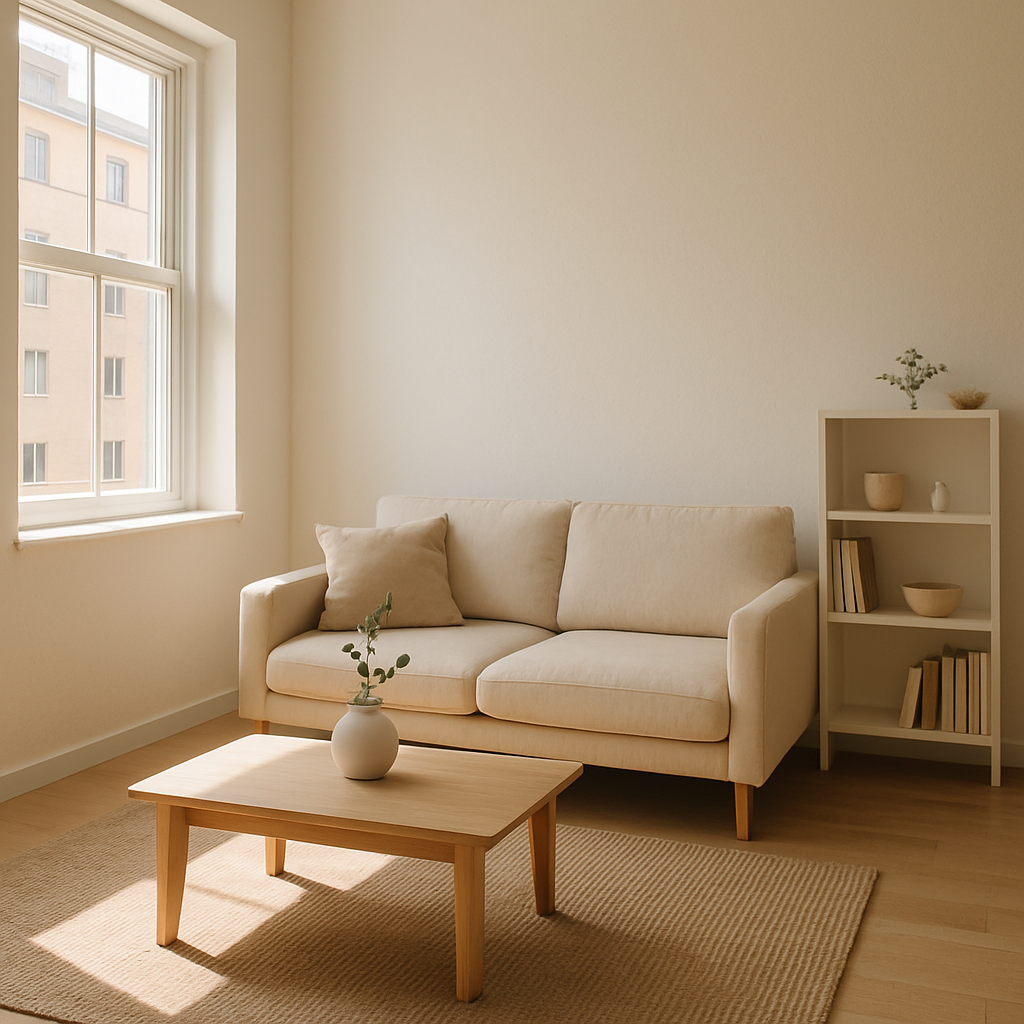The Art of Mindful Minimalism in Small Spaces

Small spaces challenge us to reconsider our relationship with possessions and environment. Living with less doesn’t mean sacrificing comfort or style it’s about making thoughtful choices that enhance our daily experience. Mindful minimalism offers a path to create homes that feel spacious, functional, and deeply personal, regardless of square footage.
The approach combines practical space optimization with the philosophical benefits of intentional living. When every item must earn its place, we naturally gravitate toward things that truly matter. This practice transforms cramped quarters into sanctuaries that support our well-being rather than drain our energy.
Finding Clarity in Constraint
The average American home contains over 300,000 items. That’s a staggering number, especially when you consider that most small apartments might only have 400-600 square feet of living space. Physical clutter creates mental clutter, making our homes feel even more confined than they actually are.
Mindful minimalism starts with honest assessment. Which items genuinely enhance your life? Which ones simply take up space? I’ve found that asking “Would I buy this again today?” cuts through sentimental attachments and helps identify what truly deserves a place in your home.
This doesn’t mean stripping your space of personality. Quite the opposite by removing the excess, you create room for the meaningful. My friend Mika lives in a 320-square-foot studio that feels more personal and inviting than many larger homes I’ve visited. Her secret? Everything visible serves a purpose or brings genuine joy.
The process requires patience. Start with obvious clutter duplicate items, broken things you’ll never repair, aspirational purchases gathering dust. Then tackle the harder categories: sentimental items, “just in case” possessions, and things that once defined your identity but no longer reflect who you are.
Many people get stuck thinking minimalism means stark white rooms and uncomfortable furniture. That misconception misses the point entirely. Mindful minimalism is about creating space for what matters to you whether that’s a collection of vintage vinyl records or an uncluttered area for morning yoga.
Designing Around Daily Rhythms
Small-space design works best when it reflects how you actually live, not how you think you should live. Track your movements and activities for a week. Where do you spend most of your time? What frustrates you about your current setup? Which areas feel cramped, and which feel comfortable?
Multi-functional furniture becomes essential when square footage is limited. A coffee table with storage, a sofa that converts to a guest bed, or a dining table that doubles as a workspace these pieces maximize utility without sacrificing style. IKEA’s Friheten sofa-bed saved my sanity during the pandemic when my tiny apartment had to function as both living room and home office.
Vertical space often goes underutilized in small homes. Wall-mounted shelving, hanging plants, and tall bookcases draw the eye upward, creating the illusion of height while keeping floor space open. Just be careful not to overdo it visual breathing room matters too.
Light dramatically affects how spacious a room feels. Maximize natural light by keeping windows unobstructed and using reflective surfaces to bounce illumination throughout the space. When natural light is limited, layered artificial lighting (ambient, task, and accent) creates depth and warmth.
Color plays a crucial role too. While conventional wisdom suggests sticking to white for small spaces, that’s not always the answer. Light colors generally make rooms feel more expansive, but strategic use of darker hues can create depth and interest. A dark accent wall can actually make a room feel larger by visually receding.
Storage solutions should prioritize accessibility for everyday items while concealing visual clutter. The “one in, one out” rule helps maintain balance when something new enters your home, something else must leave. This simple practice prevents gradual accumulation that can overwhelm small spaces.
Zoning creates distinct areas within open-concept layouts. Even in a studio apartment, you can define separate “rooms” using area rugs, furniture arrangement, or even ceiling-mounted curtains for temporary privacy. My neighbor transformed her 450-square-foot apartment into three distinct zones using carefully positioned bookshelves and thoughtful lighting.
I learned this lesson the hard way after setting up my first small apartment. I crammed in all my furniture from my previous larger place, creating an obstacle course rather than a home. After tripping over my coffee table for the third time in one week, I finally admitted I needed to rethink everything based on how I actually moved through the space.
The most successful small homes adapt to changing needs. Furniture on casters, modular shelving, and lightweight pieces that can be easily rearranged allow your space to transform as needed from workspace to dining area to entertainment center.
Scale matters tremendously in small spaces. Oversized furniture creates visual heaviness, while appropriately scaled pieces maintain proportion. That doesn’t necessarily mean tiny furniture a single statement piece can anchor a room beautifully, provided the surrounding items maintain visual lightness.
Negative space the empty areas between objects plays a vital role in small-space design. These breathing spaces prevent visual overwhelm and create a sense of calm. Resist the urge to fill every corner. Sometimes what you don’t add matters more than what you do.
Personal touches make a house feel like home, regardless of size. Display fewer items, but make them count. One stunning piece of art creates more impact than a gallery wall of mediocre prints. Quality over quantity applies to decorative elements just as much as functional ones.
Texture adds dimension without taking up physical space. Mix materials like wood, metal, glass, and textiles to create visual interest and warmth. My favorite design trick for small spaces is using textured throws and pillows that can be easily swapped seasonally they transform the feeling of a room without requiring storage for bulky alternate furniture.
Bringing nature indoors connects small spaces to the world beyond their walls. Plants improve air quality while adding life and color. Even in spaces with limited natural light, options like pothos, snake plants, and ZZ plants thrive with minimal care.
Digital clutter affects our perception of space too. Tangled cords, visible electronics, and scattered remotes create visual noise. Simple solutions like cable organizers, wireless charging stations, and decorative boxes for electronics maintain tech functionality while reducing visual distraction.
The bathroom often presents unique challenges in small homes. Wall-mounted fixtures, glass shower doors instead of curtains, and floating vanities create openness. Consistent color schemes and materials throughout create visual continuity that makes the space feel larger.
Kitchen organization requires particular attention. Open shelving displays attractive essentials while closed storage conceals visual clutter. Magnetic knife strips, wall-mounted spice racks, and hanging pot racks free up valuable counter and drawer space.
I spent years accumulating kitchen gadgets I rarely used before realizing they were stealing space from the tools I used daily. After donating my bread machine, pasta maker, and ice cream churner, my kitchen suddenly felt twice as functional despite not gaining a single square inch.
Creating a mindfully minimalist home isn’t about achieving some Instagram-perfect ideal. It’s about crafting a space that supports your life rather than complicating it. The best small spaces evolve organically as your needs change, always maintaining that delicate balance between function and beauty.
The beauty of mindful minimalism lies in its focus on quality over quantity. Instead of filling your home with disposable items, you can invest in fewer, better pieces that bring lasting satisfaction. This approach often leads to more sustainable consumption patterns and reduced environmental impact beneficial side effects of living with less.
A thoughtfully designed small space offers freedom many larger homes lack. With less to clean, maintain, and pay for, you gain time, money, and mental bandwidth for experiences that matter more than possessions. The constraints of limited square footage can become a catalyst for creativity and intentionality that enriches every aspect of life.


